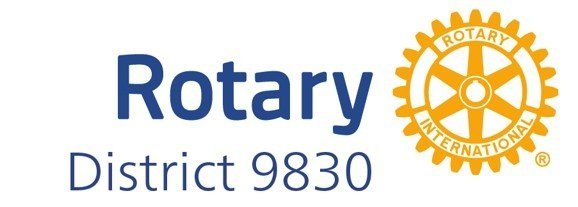District 9830 Strategic Plan
What is a Strategic Plan?
Essentially a strategic plan (or club vision) is a look into the future.
- Look at how you are now (structure, perceptions, reality…).
- Picture how you want to be in three years time.
- Put plans and actions in place to get to where you want to be within that time!
Rotary International Strategic Plan:
Rotary international has three strategic goals, and under each goal there are several action points:
1. SUPPORT AND STRENGTHEN CLUBS
· Retain current members.
· Increase current membership.
· Start new clubs.
2. FOCUS AND INCREASE HUMANITARIAN SERVICE
· Increase contributions to End Polio Now.
· Increase participation in District and global grants funded with District Designated Funds.
· Increase contributions to all The Rotary Foundation initiatives.
· Increase sustainable service.
District has added:
· Increase participation in Australian Rotary Health initiatives.
· Increase participation in Rotary Australia World Community Service initiatives.
3. ENHANCE PUBLIC IMAGE AND AWARENESS
· Build awareness of Rotary, and promote the ‘People of Action’ campaign.
· Increase awareness of Rotary club projects via ‘showcase’ and ‘ideas.’
District has added:
· Support District events planned as service and public image awareness activities.
· Encourage clubs to promote networking opportunities and signature’ activities.
· Publicise action orientated service.
DISTRICT STRATEGIC PLAN:
The District Strategic Plan is based on the RI plan with a few additions as noted above. For each dot point the District Team has created a tool(s) that clubs may or may not choose to use. These are available on the District Website as links. Explore the site - links are easy to access.
CLUB VISION / STRATEGIC PLAN:
Ideally the Club Strategic Plan will also mirror that of RI and the District. Each club is unique and does some things its own way. That’s OK. The plan you choose to build should cater for the flexibility your club requires.
The key outcomes with ALL Strategic Plans having a degree of alignment are these:
· Consistent approach to membership retention and growth Goal 1
· Increased focus on Rotary projects and service activities Goal 2
· Brand and Public Image supported and strengthened Goal 3
DISTRICT STRUCTURE:
The District Structure has changed this year reflecting Rotary Internationals ‘strategic’ approach to structure. This helps optimize focus on the three strategic goals.
The District Leadership Team looks like this:
G-Train (collective term for DG, DGE, DGN, IPDG)
District Secretary (administration functions)
District Finance Manager (treasury, audit, insurance)
District Learning & Development Coordinator (DLTTS, PETS, DTA, Building Future Leaders etc.)
Assistant Governors x 7 (liaison between DG and Club)
Director - Membership (Goal 1)
Director - Service projects (Goal 2)
Director - Vocational Projects (Goal 2)
Director - Youth Projects (Goal 2)
Director - The Rotary Foundation (Goal 2)
Director - Public Image (Goal 3)
CLUB STRUCTURE:
Rotary International’s recommended club structure changed in the 2016-17 Rotary year.
Instead of structuring clubs along the Avenues of Service model, the recommendation now is to structure strategically.
Under this recommendation a standard club would look like this:
President
Secretary (Club Administration)
Director - Membership (Goal 1)
Director - Service Projects (Goal 2)
Director - The Rotary Foundation (Goal 2)
Director - Public Relations (Goal 3)
From District Structure above, you will note the district has broken Service Project’ into three components - Service, Vocational and Youth. This better reflects the activities and workload within the district.
Details on recommended club structures can be found in:
‘Lead Your Club -President 2016-19 Edition’ which can be accessed via My Rotary
